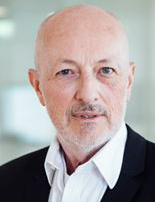GenSight Uses Gene Therapies To Target Neurodegenerative Diseases

By Ed Miseta, Chief Editor, Clinical Leader

GenSight Biologics believes it is on the cutting edge of ophthalmology, gene therapy, and drug development. The company is focused on finding treatments for patients with neurodegenerative diseases and is developing products that are a combination of gene therapy, its mitochondrial targeting sequence technology, and optogenetics.
The therapies being developed by GenSight are gene-therapy based and designed to be administered to the eye via intravitreal injection. Patients are expected to receive a long-lasting functional cure, possibly lasting the rest of their lives. One such treatment is for Leber Hereditary Optic Neuropathy (LHON).
At the onset of (LHON), patients will experience the sudden loss of central vision in one eye. In just a few weeks, most patients will lose central vision in the other eye as well. At that point, simple tasks such as reading, driving, and recognizing faces becomes impossible. The disease is caused by a genetic mutation, inherited at birth, which impacts retinal ganglion cells (RGCs) located on the surface of the retina. The genetic mutation starves RGCs of energy, making them unable to transmit signals to the brain.
GenSight’s therapy in development works by transferring the gene of interest into the cell to be expressed and to produce the functional protein. Thanks to its proprietary MTS, this protein is then shuttled to the mitochondria to restore the missing or deficient function.
A Rare Disease Presents Challenges

“The first few days after the onset of the disease are vital,” says Bernard Gilly, CEO of GenSight Biologics. “I believe if we can restore the mitochondrial function early on, we can restore the vision a patient has lost. The research conducted by GenSight has already been shown to be effective at restoring vision for patients experiencing the disease.”
Although GenSight has seen success in treating patients who have surpassed the low point of their vision loss, the company did not have the same success in a trial that treated patients earlier on in the disease progression. Gilly believes this is due to patients being treated at a time when they were at the apex of the loss of their RGCs. There does not seem to be a way for a gene therapy to stop that loss of RGCs. However, when that phase of vision loss is over, which is when patients reach the lowest point in the disease progression, they seem to be better able to restore some visual function and preliminary data suggest that their visual acuity progresses steadily from their nadir.
Finding The Low Point
The nadir, or low point of a patient’s vision, is therefore an important point in the disease progression. It is only after a patient has experienced the quick and brutal loss of RGCs that they can begin to recover some of their vision loss. However, there is currently no consensus for when patients will reach that nadir. Part of the problem is that the vision acuity of patients is not measured on a daily basis. There is no way for patients to measure their own vision loss, and it is not possible for them to travel to a clinic daily to have it recorded. For that reason, GenSight has opted to take the lowest point observed and use it as the nadir. However, that means the nadir for one patient could occur on their 90-day visit, but researchers would not know if it actually occurred on that day or perhaps a month prior. The nadir will also vary for every patient.
The lack of a natural history for this disease is another challenge GenSight faces, as is the case with other companies involved in the rare disease space. Although the disease progresses over a period of about twelve to eighteen months, there is very little information that exists showing the later development of the disease in patients. That natural history is generally what researchers use to determine if the development of the disease changes after administration of the treatment. Without that history, noting changes that are due to the treatment effects becomes more difficult.
Still, in working with the FDA, GenSight has been able to select a primary endpoint, which is the best corrected visual acuity (BCVA) change from baseline reported at 52 weeks post-treatment in the second affected eye. Secondary endpoints include BCVA reported at two-years post treatment, contrast sensitivity, and quality of life.
“We have launched a registry study and are hoping to find patients and medical centers willing to participate,” says Gilly. “We want to be able to track the history and progression of the disease and begin the process of creating a natural history that will aid researchers performing future studies. Understanding the disease progression will be necessary for us to find effective treatment options for patients.”
Trial Finds Improvement In Both Eyes
One final learning that GenSight found in a previous trial was a surprise discovery that surfaced unexpectedly. In two of its Phase 3 trials, patients received an injection of the treatment in one eye. In the other eye they will receive what is essentially a placebo treatment. However, when measuring the visual acuity of the patients, an improvement in vision was also recorded in the non-treated eyes.
“We find the two eyes are tracking together,” states Gilly. “This really came as a surprise to us and part of the clinical community. While the news is good for patients, we had to search for an explanation of the phenomenon. Neuroophthalmologists were not so surprised and we now know that several pathways exist that allow mitochondrion and other material to be shared between functional and stressed neurons. We now know that this bilateral effect is a real observation and is due to the treatment being administered.”
Although LHON is a rare disease, GenSight has been able to find the patients it needs to conduct trials. Gilly notes retention of patients has also not been an issue, which he attributes to the benefits patients receive from the treatment. GenSight tracks subjects in its first two Phase 3 trials for a total of 96 weeks. A third Phase 3 trial will track subjects up to two years. “We believe our treatment, GS010, has the potential to become the first curative treatment for LHON,” adds Gilly. “It will address a significant unmet medical need for patients with this rare disease.”
In July 2019, GenSight completed enrollment for its third GS010 Phase 3 trial ahead of schedule. The trial, which will test the efficacy of bilateral injections of the GS010 treatment, enrolled 98 patients and is expected to be completed in September 2019. Results from the first year of treatment are expected in the third quarter of 2020. GS010 also has Orphan Drug Designation in both the U.S. and Europe. The trial was designed under a Special Protocol Assessment (SPA) with the FDA.
